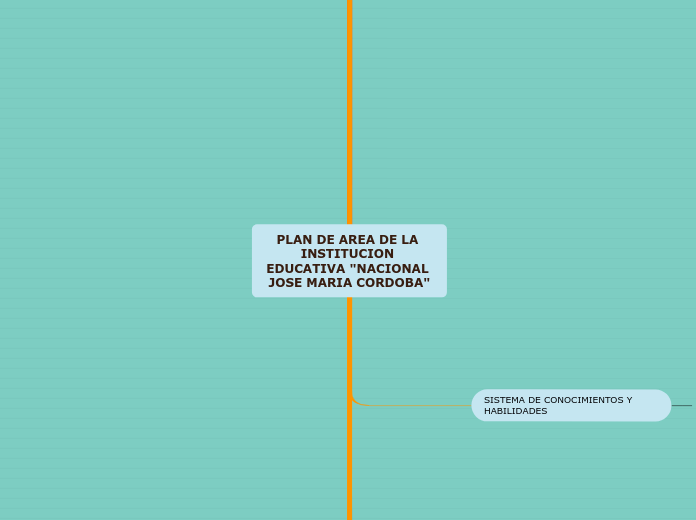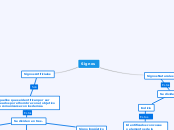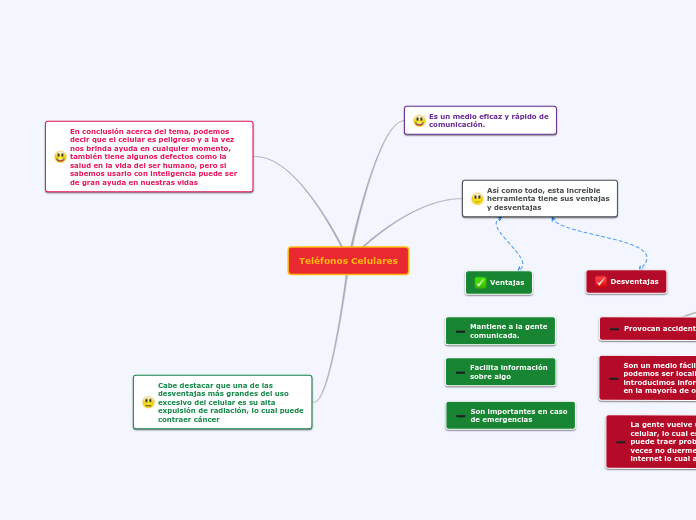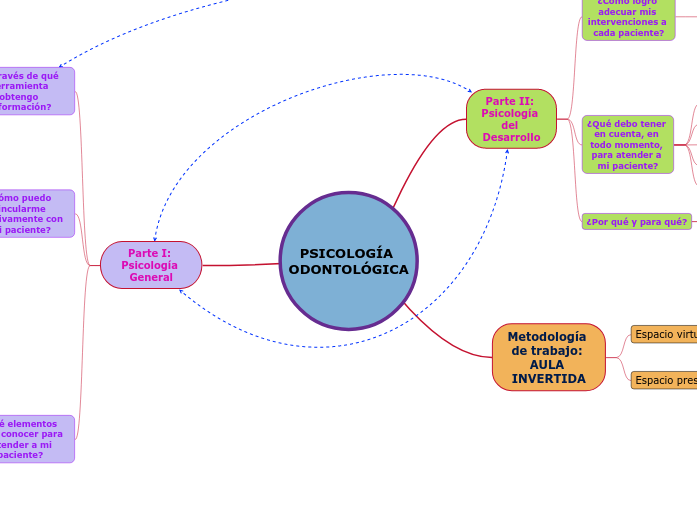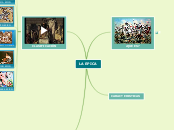PLAN DE AREA DE LA INSTITUCION EDUCATIVA "NACIONAL JOSE MARIA CORDOBA"
To name your story, you have to think about the overall message and what you want your audience to understand from the story. Also, make it relevant and easy to remember.
RECURSOS Y MEDIOS DIDÁCTICOS
estos recursos y medios didácticos se basan en la evaluación que se desarrollará en forma permanente e integral. Al estudiante se le evaluará teniendo en cuenta los procesos cognitivos, valorativos, procesos de competencias comunicativas, participación, destrezas y el desarrollo de socialización del trabajo en grupo.
SISTEMA DE MÉTODOS, PROCEDIMIENTOS Y TÉCNICAS REQUERIDAS POR EL ÁREA
• Elaboración del Periódico El Conalquista
• Creación de Antología Sueños y Fantasías
• Desarrollo del proyecto de Cine Foro
• Desarrollo de talleres en grupo y en forma individual.
• Lectura y análisis de obras literarias y lectura e interpretación de poemas.
• Redacción de textos expositivos, narrativos y argumentativos.
• Revisión periódica de los cuadernos de trabajo.
• Realización de mesas redondas, debates, foros, conferencias.
• Consulta de temas sugeridos.
• Presentaciones teatrales.
• Concursos de ortografía.
• Dramatizaciones.
• Proyección de videos.
• Cine foros
CUADRO DE ACTIVIDADES ANUAL
ACTIVIDADES
Conmemoración
“día del idioma”
Proyecto de lectoescritura
Recital poético
Antología sueños y fantasias
Periódico virtual “el conalquista”
FECHA PROGRAMADA
29 iv 202...
Se desarrolla en el transcurso del año una hora semanal en todos los grados
28 x 202...
Semana cultural en el mes de agosto 2020...
Renovaciones mensuales
SISTEMA DE CONOCIMIENTOS Y HABILIDADES
Unidades
de Aprendizaje
por aérea
SECUNDARIA Y MEDIA ACADEMICA: 6°,7°,8,9°,10° y 11°
MATRIZ DE COMPONENTES, ESTANDARES Y COMPETENCIAS
DBA
Participa en escenarios académicos, políticos y culturales, y asume una posición crítica y propositiva frente a los discursos que le presentan los distintos medios de comunicación y otras fuentes de información.
EVIDENCIAS DE APRENDIZAJES
1, Analiza la información difundida en los medios de comunicación institucionales y regionales, para participar en procesos democráticos.
2. Infiere la relación de los mensajes emitidos por los medios de comunicación masiva dentro de contextos sociales, culturales y políticos.
3. Contrasta estilos, tonos y estrategias discursivas, para determinar sus modos de participación en los escenarios democráticos institucionales.
4. Comprende que la entonación revela la intención de resaltar o encubrir información de parte del interlocutor.
PARTICIPACIÓN Y RESPONSABILIDAD DEMOCRÁTICA
PLURALIDAD, IDENTIDAD Y VALORACIÓN DE LAS DIFERENCIAS
COMPETENCIAS CIUDADANAS:
• cognitivas,
• emocionales,
• comunicativas e
• integradoras
COMPETENCIAS
FACTORES, ESTÁNDARES Y SUBPROCESOS
Producir textos orales de tipo argumentativo para exponer ideas propias y llegar a acuerdos en los que prime el respeto por el interlocutor y la valoración de los contextos comunicativos.
COMPONENTES
SEMANTICO, SINTACTICO Y PRAGMATICO
PRIMARIA 1°,2°,3°,4° Y 5°
TEMAS O EJES CONCEPTUALES:
6° Ética de la comunicación
Desarrollo personal y social - competencias ciudadanas
• La argumentación en el diálogo.
• Dimensión personal.
• Dimensión social.
5° COMUNICARSE PARA ACERCARNOS AL MUNDO DE CADA SER
COMPETENCIAS A DESARROLLAR:
El teléfono, comunicación, géneros literarios.
Aplicación de los textos narrativos a la realidad actual.
Elaboración de cartas, noticias y reportajes.
4° LA NARRACIÓN: .
COMPETENCIAS A DESARROLLAR:
Explica las características principales de los mitos.
Relaciona el mito con la leyenda.
Analiza los elementos y partes principales de un cuento.
Comprende los mensajes formativos de las fábulas.
Identifica las clases de palabras según el acento.
Identifica una palabra primitiva de una derivada.
Utiliza los prefijos y sufijos al inicio y final de cada palabra para modificar su significado.
Interpreta y analiza la oración y sus partes.
Expresa idea que permiten formar oraciones para la construcción de párrafos.
3° EXPRESO MIS IDEAS
COMPETENCIAS A DESARROLLLAR:
Lee diversos tipos de textos literarios.
Identifica los principales elementos y roles de la comunicación para enriquecer procesos comunicativos auténticos.
Comprende la información que circula a través de algunos sistemas de comunicación no verbal.
Produce textos orales que responden a distintos propósitos comunicativos.
Produce textos escritos que responden a diversas necesidades comunicativas y que siguen un procedimiento estratégico para su elaboración.
2° APRENDEMOS NARRANDO
COMPETENCIAS A DESARROLLAR:
. Comprensión de textos que tengan formato y finalidades.
. Comprensión de textos literarios para proporcionar la capacidad creativa y lúdica.
. Comprensión de información que circula a través de algunos sistemas de comunicación no verbal
1° APRENDER ES DIVERTIDO Aprestamiento. Vocales.
a-e-i-o-u
nexo: y
etras:l, p, m, n, s
COMPETENCIAS A DESARROLLAR:
Comprensión de textos literarios para propiciar el desarrollo de la capacidad creativa y lúdica.
PREESCOLAR:
TEMAS O EJES CONCEPTUALES:
Aprestamiento
(Rasgos diferenciadores de desempeño).
Mis primeros trazos.
Trazos rectos y curvos
Trazos con figuras
Líneas punteadas
Decoración de líneas
Las vocales
a, e, i, o, u.
Consonantes
Mm y Pp.
Juguemos con las letras
Discriminación auditiva
Expresión oral
COMPETENCIAS A DESARROLLAR:
Realiza ejercicios de aprestamiento al proceso lector haciendo uso de sus rasgos diferenciadores de desempeño.
Desarrolla habilidad motriz en el trazo dirigido como elemento básico para la escritura.
Identifica las vocales y las consonantes iníciales de manera fonética y grafica.
Relaciona las vocales y las consonantes aprendidas a partir de su uso en la cotidianidad.
ESTÁNDARES CURRICULARES A DESARROLLAR POR GRADOS:
MEDIA ACADEMICA
SECUNDARIA
Secundaria:6°,7°,8° y 9°
PRIMER PERIODO: manifestación de interés por la lectura.
SEGUNDO PERIODO: interpretación de textos.
TERCER: expansión de la literatura latinoamericana.
Cuarto: se fomentan las estrategias de búsquedas.
PRIMARIA
Primaria: 1°,2°,3°,4° y 5°
PRIMER PERIODO: comprensión y producción de textos.
SEGUNDO PERIODO: comprensión, producción y uso de vocabularios.
TERCER PERIODO: responde a un propósito comunicativo.
CUARTO PERIODO: hace uso de un vocabulario de acuerdo al contexto.
PREESCOLAR
Preescolar:
Primer periodo: aprender a distinguir entre el lenguaje de imágenes y escritura.
Segundo periodo: identificar la organización deo lenguaje icónico y escritura.
Tercer periodo: construcción de forma progresiva el sistema lingüístico y su ordenación.
Cuarto periodo: expresión de ideas, fenómenos de la realidad y acontecimientos.
OBJETIVOS ESPECÍFICOS
• Adquirir un vocabulario amplío, para comprender lo que oyen y leen y expresarse con precisión, claridad y propiedad.
• Comprender que el idioma es un medio permanente de vinculación con los avances científicos, tecnológicos y culturales.
• Desarrollar las cuatro habilidades comunicativas: hablar-escuchar, leer escribir, con base en la concepción de que la lengua está en relación directa con la realidad y el pensamiento.
• Adquirir una clara comprensión de los elementos constitutivos de la lengua materna, para que la empleen con eficacia y corrección.
OBJETIVOS GENERALES
The ending of a story is essential. We all know that if the ending is weak, what happened before loses its importance. So make it unpredictable, but fair. A resolved ending answers all the questions and ties up any loose threads from the plot.
Al terminar el ciclo de la educación básica y media, los estudiantes estarán capacitados para:
This is the moment when the main character surpasses the last obstacle and finally faces their greatest challenge.
The climax usually follows one of these patterns:
- realization
- resolution
- choice
Type in your answer.
• Producir diferentes clases de textos escritos, coherentes y cohesivos, fundamentalmente informativos, expositivos, argumentativos, narrativos y poéticos.
• Alcanzar los distintos niveles de comprensión textual: literal, diferencial y valorativo o crítico, necesarios para el buen desempeño académico y laboral.
ENFOQUE DEL ÁREA
The middle of the story is where you add layers of complications that will lead to the end. Reveal more about the character's journey. Did their personality go through changes? How did they overcome the challenges? And as you build up the story’s central conflict, make it more personal to that character. Also, from the middle act, you have to lead into the final act.
los docentes orientan la formación en lenguaje de los estudiantes, según se correspondan con los objetivos del área, sus metas y con las necesidades previstas de los educandos mediante investigaciones pertinentes realizadas por autoridades educativas como:
There wouldn't be any tension and excitement in your story if there weren't any obstacles in your character's way.
Ministerio de Educación Nacional, Secretaría de Educación e Instituciones Educativas.
el enfoque de área esta comprometida en los campos fundamentales que implica el estudio del lenguaje como:
Each story has a main character and that character usually needs to solve a problem or challenge. The character's challenge is the one that creates tension throughout the story.
el desarrollo de sistemas simbólicos
la expresión artística de la lengua o su literatura
Type in any other challenges which other characters in the story need to face.
el desarrollo de la lengua en su forma oral y escrita
In most stories, there are 3 challenges. The number 3 is a mystical number symbolizing completeness. Try to come up with interesting challenges with which your character needs to struggle.
See a few examples below:
- turns into a werewolf at night
- is sent back in time
NIVELES-ASIGNATURAS- INTENSIDAD HORARIA
In the beginning of the story (or the exposition), you will need to introduce the setting and characters. You might also want to introduce the main conflict. This part of the story is important because it gives the reader necessary background information and maybe even a first insight into a character’s personality.
Dimensión /Asignatura
The setting (time & place) of a story can change throughout the plot.
intensidad
The time of the story can also change. It can describe the event of a single day or can include an entire year's plot. Anyway, don't forget to mention it.
5 Horas
Lengua castellana
Your story can take place wherever your imagination will take you to.
For example: in an elevator, in an enchanted forest, etc. Don't forget to give details of the environment each time the setting changes, otherwise, the story can be confusing. Also, mention the seasons as each of them has unique weather and events.
Nivel
Characters are essential to a good story. Usually, the protagonist(s) is/are the most affected by the plot. Introduce a character by focusing on their actions, interests, and occupation, as the physical appearance doesn't make a difference in most cases.
GRADOS
Type in the name of your character.
media academica
Add other qualities/attributes of the character.
10° y 11°
basica secundaria
What is your character's main goal?
fight Evilfind lovedefeat his/her enemyrule the worldmake friendstime travelmake an awesome discoveryOther
6°,7°,8° y 9°
basica primaria
Which traits best describe the character's personality? Choose more if necessary:
introvertedloyalkindindependentquick-thinkingadventuresomeidealisticsweet-naturedcalmrisk-takercreativewittystrictfussyweirdclumsyharshaggressivecarelessclingingcowardlycrueldeceitfulimpulsiveOther
1°,2°,3°,4°,5°
preescolar
Choose the type of your chacter:
Protagonist (main character)Antagonist (main character's opponent)Flat (stereotypical character)Round (his/ her personality develops throughout the story)Static (doesn't evolve as a person throughout the story)Dynamic (dramatical change in personality)Confidant (the main character trusts him/ her)Foil (contrasting character who enhances the personality of another character)Other
